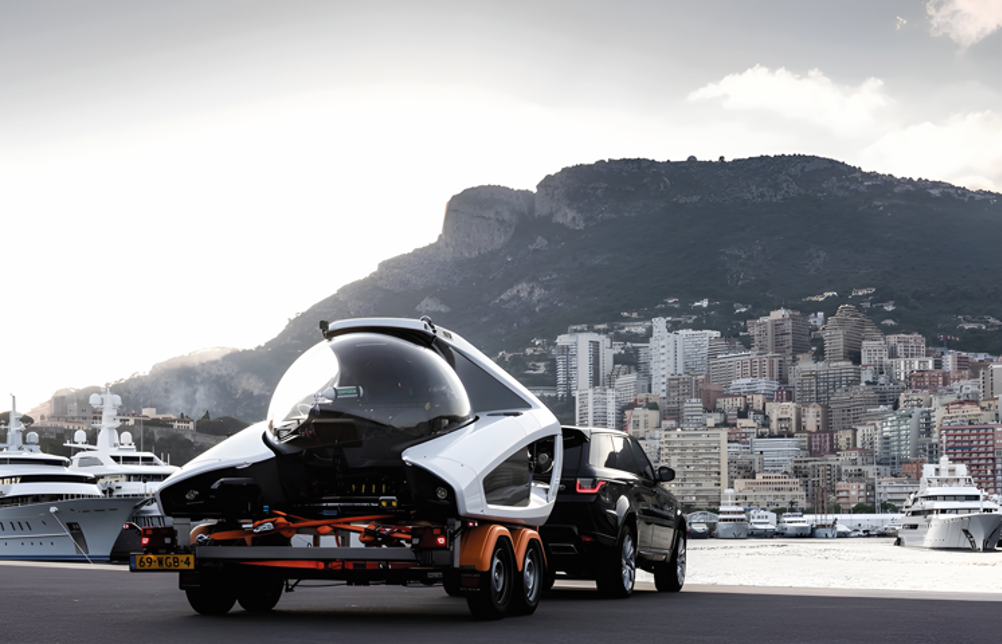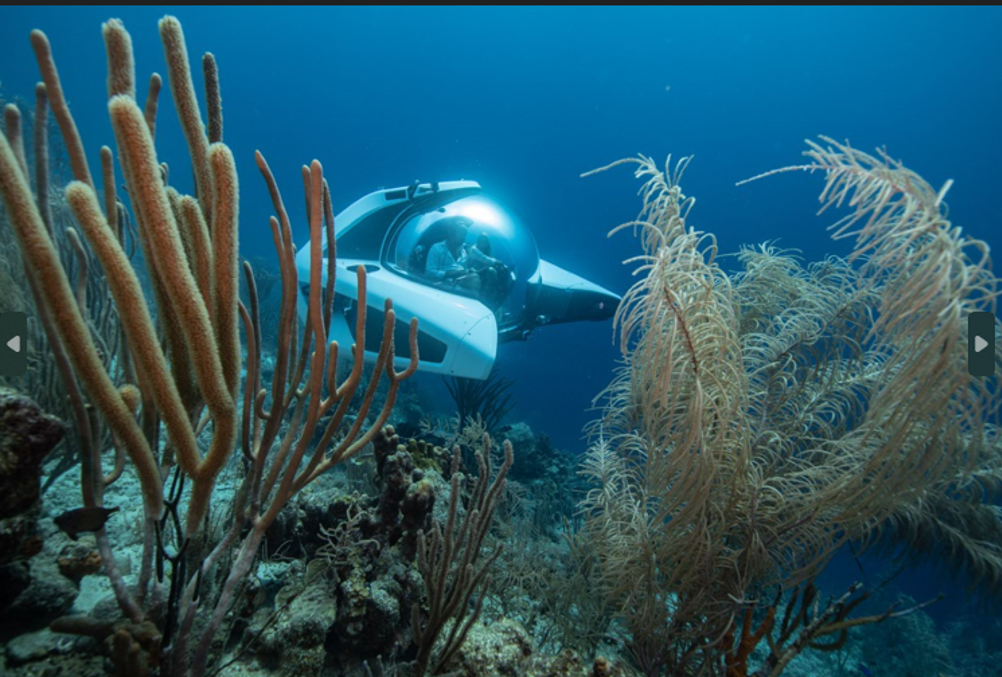While for many of us, the idea of a £1 million purchase is entirely absurd, we can’t help but wonder what we could have for this amount of money… holidays, homes, or perhaps the fastest and most attractive supercars.
Despite their extortionate cost, we see these supercars all the time – on our televisions, in the movies and, of course, on our roads, and it is this visibility that fuels many a dream to own one.
Dutch company U-Boat Worx is now taking this philosophy to the water, as it builds on its plans to mass produce what it hopes could one day become the ‘supercar’ of the ocean: the privately owned submersible
First founded in 2005, the company has become the largest builder of private submarines in the market, in terms of output, commissioned vessels, number of employees and units in active use. Indeed, the Netherlands-based company has produced more submarines than all active manufacturers combined currently.
The firm’s product range is nothing short of extensive, from the C-Researcher series that can hold up to five passengers and dive to a 3000m maximum depth, to the UWEP (Under Water Entertainment Platform) that can take up to 120 passengers, crew and staff for a 150m dive.
The fully configurable UWEP is described by the company as ‘a new class of exceptionally spacious, privately-operated entertainment submarines,’ and, with enough space for a restaurant, casino or wedding venue, this product falls firmly at the more extreme end of its range.
However, U-Boat Worx’s main aim is to make submarines less out-of-reach for everyday consumers, by making it possible to privately own a sub and explore the seas at your own leisure. The frontrunner of this vision is the NEMO, the world’s first series-produced submersible, named after Captain Nemo – the designer and captain of the Nautilus submarine in Jules Verne’s 1869 classic ‘Twenty Thousand Leagues Under the Sea.’
Independent design engineer Rob Wolkers, who has previously developed an E-Fun scooter and Avion’s A320 flight simulator, was brought in by U-Boat Worx to bring this vision to life.
“Normally, with a project like this, you get a list of set requirements,” said Wolkers. “For the NEMO, we called it the ten commandments. They weren’t really measurable requirements, the brief was more focused on the feel and experience, and that’s what I liked about the opportunity.”
These ‘ten commandments’ included creating an ultimate driving experience, ensuring the sub was easy to operate and offered customers an unobstructed view of their surroundings whilst exploring; ensuring that it was maintenance friendly, in terms of access to the internal structure; and, above all else, that the NEMO was a consumer product rather than a machine.
“The main goal was to make a submersible for as wide an audience as possible, because that was always the dream of U-Boat Worx’s founder, Bert Houtman,” said Wolkers.
“He has always wanted to build a sub that was as accessible as possible for everyone – not only price wise, but also how you can move and deploy the submersible. You don’t need a super yacht to own a NEMO, you can put it on a trailer behind a car. The total cost of ownership is much cheaper compared to other submarines, but you still get the same awesome experience when you’re in the water.”

With a single lifting point, U-Boat Worx said the sub is easily placed on a flat surface without the need for a cradle or davit, making it easily deployable on land or ship-board. Complementary beach launchers, towable car trailers, floating submarine houses and small support crafts have also been developed to allow simple submarine mobilisation.
It should be noted that technically, because it needs to be transported and supported by a mother ship or vehicle, the NEMO is defined as a submersible, rather than a submarine. Submarines, like the rest of U-Boat Worx’s portfolio, instead have enough power to launch from and return to a port completely independently.
The NEMO, which can hold two passengers and dive to a maximum of 100m at a rate of three knots, is the lightest submersible built to date, weighing-in at 2,500 kg with base specifications. The sub is just 92 inches wide, with a height of 61 inches and a length of 110 inches, which U-Boat Worx said takes up less space than two jet-skis stored side-by-side.
Wolkers said that the main challenge of working within these dimensions was: “Getting all the systems you need for the functionality, as well as all the safety systems, on-board and within the interior.
“Then, of course, it’s not only getting all the systems in there, but making sure they are accessible for repairs and maintenance. One of the big challenges was that every interior part had to fit though the submersible’s hatch – it was like building a model ship within a bottle.”
Despite this, the NEMO engineering team was able to develop an internal system within the maximum dimensions of the submersible, which works by controlling the air and water intake in its tanks.
The NEMO’s ballast tanks aren’t pressurised, and instead are open tanks that, when the sub is floating on the water’s surface, are filled with air. To begin diving, the pilot has to open the valves of the tanks, which then displaces the air with water and, of course, forces the NEMO to sink due to the change in its density.
Once submerged, the sub can be manoeuvred by controlling the amount of compressed gas pushed back in or out of the tanks. To return to the surface, the tanks are fully filled with the compressed gas, to displace the water back into the ocean and make the sub buoyant once more.
It is also powered by four silent electrical thrusters, which U-Boat Worx said makes hovering close to a point-of-interest or descending to the seabed against strong currents ‘simple and easy.’
“Whilst there’s no such thing as an ‘international submarine license,’ U-Boat Worx has its own two-week training course, which isn’t just practice but theory too. You have to know how the systems work and the principles of the sub as well,” said Wolkers.

You can, however, still experience driving the NEMO without a licence, as the MANTA Controller allows for the trained pilot to easily transfer control to the passenger. U-Boat Worx said the intuitive MANTA controls allow for supervised passenger steering, with ‘pinpoint precision manoeuvring’ and quick access to intelligent pilot assistance functions such as Auto-heading and Auto-depth.
The NEMO team has also developed the MARLIN Controller, a wireless remote that can navigate the submersible whilst it is on the surface, and move it away from the support vessel when underwater, without a pilot inside.
Whilst these smart systems offer great control over the NEMO, Wolkers highlights the particular need for training if they were to fail, despite how unlikely the scenario is.
“The NEMO has a manual override to drop weight and total mass if the power fails, so that it can float back up to the surface. If everything else fails, it has four days’ worth of life support, including food and oxygen, as well as a manually deployed buoy attached to a line, to notify those above of your whereabouts,” he said.
When considering the current use-cases for the invention, Wolkers said it is mainly recreational, but that the NEMO has been taken out on a few research missions – including a Greenpeace mission in 2023, to reach a never-before-studied reef ecosystem in Mexico.
Looking ahead, the NEMO team hopes to increase the sub’s mass production plan, so that the level of accessibility and the number of use-cases can continue to grow. Due to the NEMO’s more accessible price compared to other submarines, the market is bigger, and U-Boat Worx hopes that, with this larger market, it will be able to produce more for instant purchases.
“If the production numbers get bigger, there’s definitely more optimisation needed, for individual parts and making the production more efficient,” said Wolkers.
“As engineers we are always thinking of ways to make something better. There has to come a point where you finish with the designing and move onto the building. In general, I get a lot of credit for this design, but it’s a big team effort from the initial concept to the final product.”
Certainly, with every sale – estimated by Wolkers to be up to around 20 now – U-Boat Worx gets one step closer to making its dream of creating a volume production ‘supercar’ submarine a reality.
Perhaps, in ten years’ time, it won’t be the fastest, most attractive cars that we all dream of owning, but our own submersible instead.











McMurtry Spéirling defies gravity using fan downforce
Ground effect fans were banned from competitive motorsport from the end of the 1978 season following the introduction of Gordon Murray's Brabham...